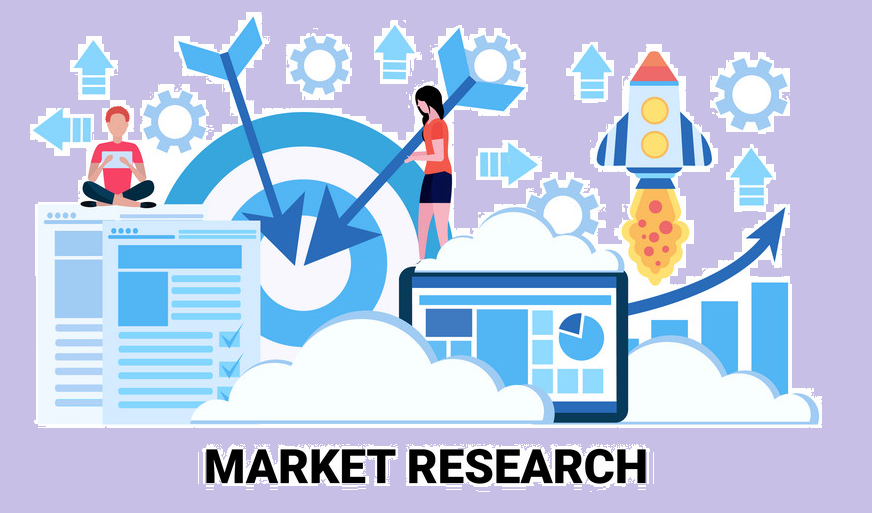Deep Learning Applications and Neural Networks
-
 By Arthi
By Arthi - Published on May 12 2023

Table of Contents
What Is Deep Learning Application?
Deep learning applications work as a branch of machine learning by using neural networks with many layers.
It improves the amount of data being used to train them in deep learning. The way the human brain works is the same way AI (Artificial Intelligence) tries to imitate it.
Deep learning applications are divided into supervised, semi-supervised, and unsupervised categories. In this way, the application of deep learning works in artificial intelligence.
Why Artificial Neural Networks?
Artificial neural networks are created to work automatically and mimic the human brain. ANN is a collection of connected units, or artificial neurons.
Each connection can transmit the connection to other neurons. It receives the signal and processes it by connecting to neutrons.
Signals are "real numbers," and the output of each neuron is computed by linear functions. Some applications of deep learning are different in artificial neural networks.
Common Deep Learning Applications In AI

Fraud detection
AI takes on a very big responsibility in fraud detection. This became one of the major problems in industry at the present time.
Most often, it happens in the banking sector. For example, by using the customer details and secret codes, the customer's complete information is stolen without the customer’s knowledge.
To avoid such problems, fraud detection deep applications are used in AI by giving the alert to the customer.
Customer relationship management system
The customer relationship management system refers to the system as the Single Source of Truth. They contain sensitive information about the company like records, emails, phone call recordings, and purchase history.
Deep learning helps companies identify their target customers. And CRM intimates the latest trends to the customer.
Computer vision
The main aim of deep learning is to work with the information in the human brain and detect patterns. It is the best way to train and visualize based on AI. Using deep learning models,
Objects like airplanes, faces, and guns are detected.
Vocal AI
When it comes to vocal AI, it is authorized to translate human speech or voice to text. Deep learning models are enabled with Google to capture the voice and give the test results for the searched query.
Natural Language Processing
The natural language process is used to identify the complicated patterns in sentences to provide a more accurate clarification.
This technology made it possible for robots to read messages and understand their delightful meaning.
Data refining
It is very hard for a scientist to identify patterns or draw conclusions when the data is large and raw.
With the help of deep learning models, it is now accessible. It can be useful to identify disease control, food security, disaster mitigation, and satellite imagery.
Autonomous vehicles
Autonomous sensors are added to vehicles to inform the user or driver if a problem occurs while driving.
Applications of deep learning in artificial intelligence play a very important role in technology.
In autonomous vehicles, the user gets the notification for the safety drive and route and other instructions.
Supercomputers
If a user wants to build their deep learning model, the supercomputer deep application vision system works here. Big companies use their workstation to work better.
Investment Modeling
Investment modeling is another application of deep learning. This application works completely in the investment industry, like share prices, margins, company conference calls, quarterly results, and company event updates.
E-commerce
In the fast-moving market, e-commerce plays an important role all over the world. It helps the user buy or sell the product over the internet.
E-commerce works better for customers when they have exact information, which makes it easier and more satisfying.
Emotional Intelligence
Computers cannot recreate humans’ emotions. Even so, they can give ideas to humans according to their mindsets with the help of deep learning applications.
Entertainment
We can find a lot of users on streaming platforms like Netflix, YouTube, Twitch, and Extra. With the help of deep learning applications, the streaming platform's patterns are analyzed for the user.
Advertising
By using common applications of deep learning, companies can gather a lot of information about the user and interact with marketing professionals.
Lots of companies are using deep learning methods to advertise in a variety of workplaces like marketing, technology, and more.
Manufacturing
To be the best manufacturing factory, manpower and machine work are important. An example of a deep learning application in manufacturing is making leather from shoes.
Healthcare
Everyone has their mobile phones with them 24/7. For any emergency, medical facilities are available with the help of deep learning applications in healthcare.
Also, the National Center for Biotechnology has proven that deep learning can detect skin cancer through images.
Importance And Benefits of Deep Learning
The biggest benefit of deep learning is that it can execute its features. It also enhances EMS reporting software by automating incident data capture and surfacing key metrics in real time. And it promotes fast learning by using a scanned algorithm to identify the future.
The hidden data are discovered by solving complex problems. Deep learning applications have a wide range of applications.
Programming language, data structure, and cloud computing platforms are the main skills in deep learning.
This is accomplished by employing deep learning networks like the recurrent neural network and modular neural networks.
Examples of deep learning applications are Siri, Cortana, Amazon Alexa, Google Assistant, Google Home, and others.
Types of Deep Learning Networks

There are many different types of neural networks, like recurrent neural networks and modular neural networks. These different types, like recurrent neural networks and modular neural networks, serve different purposes in deep learning.
- Feedforward neural networks
- Radial basis function neural network
- Multi-layer perceptron
- Convolution neural network
- Recurrent neural network
- Modular neural network
- Sequence to sequence
Feedforward neural network
Feedforward neural networks are the very basic level of network. This control starts working from the input layer to the output layer.
It works only with a single layer of data. It moves from one to another and does not go to any other network.
Hence, facial recognition occurs by using an algorithm in the computer version with the help of a Feedforward neural network.
Radial basis function neural network
The radial basis function neural network works with more than two layers. The input and output layers are calculated using the center of the point. And it stores the system's power.
Multi-layer perceptron
Multi-layer perceptrons work with more than three layers. Every node of the website is fully connected to the network. These layers are very expensively used in machine learning technology.
Convolution neural network
Convolutional neural networks work with multilayers and contain very deep networks. It hardly uses one or two parameters in deep learning networks.
Recurrent neural network
Recurrent neural networks are a type of neural network. Recurrent neural networks get feedback from output neurons.
A small state memory is to be maintained to develop the Chabot in recurrent neural networks. These recurrent neural networks are important neural networks in deep learning.
Modular neural network
A modular neural network is not a single network; it is a combination of multiple networks. It makes a big neutral network, and its goal is to reach a common network.
To break through these problems, a modular neural network is very helpful in network deep learning. Modular neural networks can achieve this by combining various neural networks toward one goal.
Modular neural networks are sometimes referred to as hive networks, as they combine the prowess of multiple networks to accomplish a single task. The way modular neural networks work can be compared to the workings of a beehive.
Sequence to sequence
Sequence-to-sequence networks are similar to recurrent neural networks. This network works on encoding and decoding methods. Encoding is the process of taking input. Decoding works the process of output.
Conclusion
Deep learning applications are types of machine learning that imitate human knowledge. And it is an important element of data science that works for statistics and predictive modeling.
In this article, we have discussed deep learning applications and their methods. We have also discussed types of deep learning and their benefits.
We have also seen in brief the operation of different neural networks like the recurrent neural network and the modular neural network.
For a better understanding of deep learning, enroll in Sprintzeal’s AI and Machine learning program offered globally.
Here are some articles you might be interested in
Subscribe to our Newsletters
Popular Programs
Trending Posts
Humanizer Pro: Instantly Humanize AI Generated Content & Pass Any AI Detector
Last updated on Jul 24 2025
What are the Prerequisites for Machine Learning?
Last updated on Feb 7 2023
Machine Learning Project Ideas to Enhance Your AI Skills
Last updated on Oct 22 2025
Future of Quality Management: Role of Generative AI in Six Sigma and Beyond
Last updated on Apr 24 2025
Top 10 Career Opportunities in Artificial Intelligence
Last updated on Oct 5 2023
Are AI-Generated Blog Posts the Future or a Risk to Authenticity?
Last updated on May 29 2025
Categories
- Other 71
- Agile Management 48
- Cloud Computing 57
- Project Management 174
- Big Data 67
- Business Management 88
- Digital Marketing 81
- IT Service Management 29
- Programming Language 59
- AI and Machine Learning 85
- IT Security 112
- Quality Management 78
- IT Hardware and Networking 26
- Microsoft Program 5
- Workplace Skill Building 14
- Risk Management 9
- Information Security 8
- Leadership and Management 9
- Corporate Training and Development 1
Trending Now
Consumer Buying Behavior Made Easy in 2026 with AI
Article7 Amazing Facts About Artificial Intelligence
ebookMachine Learning Interview Questions and Answers 2026
ArticleHow to Become a Machine Learning Engineer
ArticleData Mining Vs. Machine Learning – Understanding Key Differences
ArticleMachine Learning Algorithms - Know the Essentials
ArticleMachine Learning Regularization - An Overview
ArticleMachine Learning Regression Analysis Explained
ArticleClassification in Machine Learning Explained
ArticleDeep Learning vs Machine Learning - Differences Explained
ArticleDeep Learning Interview Questions - Best of 2026
ArticleFuture of Artificial Intelligence in Various Industries
ArticleMachine Learning Cheat Sheet: A Brief Beginner’s Guide
ArticleArtificial Intelligence Career Guide: Become an AI Expert
ArticleAI Engineer Salary in 2026 - US, Canada, India, and more
ArticleTop Machine Learning Frameworks to Use
ArticleData Science vs Artificial Intelligence - Top Differences
ArticleData Science vs Machine Learning - Differences Explained
ArticleCognitive AI: The Ultimate Guide
ArticleTypes Of Artificial Intelligence and its Branches
ArticleWhat are the Prerequisites for Machine Learning?
ArticleWhat is Hyperautomation? Why is it important?
ArticleAI and Future Opportunities - AI's Capacity and Potential
ArticleWhat is a Metaverse? An In-Depth Guide to the VR Universe
ArticleTop 10 Career Opportunities in Artificial Intelligence
ArticleExplore Top 8 AI Engineer Career Opportunities
ArticleA Guide to Understanding ISO/IEC 42001 Standard
ArticleNavigating Ethical AI: The Role of ISO/IEC 42001
ArticleHow AI and Machine Learning Enhance Information Security Management
ArticleGuide to Implementing AI Solutions in Compliance with ISO/IEC 42001
ArticleThe Benefits of Machine Learning in Data Protection with ISO/IEC 42001
ArticleChallenges and solutions of Integrating AI with ISO/IEC 42001
ArticleFuture of AI with ISO 42001: Trends and Insights
ArticleTop 15 Best Machine Learning Books for 2026
ArticleTop AI Certifications: A Guide to AI and Machine Learning in 2026
ArticleHow to Build Your Own AI Chatbots in 2026?
ArticleGemini Vs ChatGPT: Comparing Two Giants in AI
ArticleThe Rise of AI-Driven Video Editing: How Automation is Changing the Creative Process
ArticleHow to Use ChatGPT to Improve Productivity?
ArticleTop Artificial Intelligence Tools to Use in 2026
ArticleHow Good Are Text Humanizers? Let's Test with An Example
ArticleBest Tools to Convert Images into Videos
ArticleFuture of Quality Management: Role of Generative AI in Six Sigma and Beyond
ArticleIntegrating AI to Personalize the E-Commerce Customer Journey
ArticleHow Text-to-Speech Is Transforming the Educational Landscape
ArticleAI in Performance Management: The Future of HR Tech
ArticleAre AI-Generated Blog Posts the Future or a Risk to Authenticity?
ArticleExplore Short AI: A Game-Changer for Video Creators - Review
Article11 Undetectable AI Writers to Make Your Content Human-Like in 2026
ArticleHow AI Content Detection Will Change Education in the Digital Age
ArticleWhat’s the Best AI Detector to Stay Out of Academic Trouble?
ArticleAudioenhancer.ai: Perfect for Podcasters, YouTubers, and Influencers
ArticleHow AI is quietly changing how business owners build websites
ArticleMusicCreator AI Review: The Future of Music Generation
ArticleHumanizer Pro: Instantly Humanize AI Generated Content & Pass Any AI Detector
ArticleBringing Your Scripts to Life with CapCut’s Text-to-Speech AI Tool
ArticleHow to build an AI Sales Agent in 2026: Architecture, Strategies & Best practices
ArticleRedefining Workforce Support: How AI Assistants Transform HR Operations
ArticleTop Artificial Intelligence Interview Questions for 2026
ArticleHow AI Is Transforming the Way Businesses Build and Nurture Customer Relationships
ArticleBest Prompt Engineering Tools to Master AI Interaction and Content Generation
Article7 Reasons Why AI Content Detection is Essential for Education
ArticleTop Machine Learning Tools You Should Know in 2026
ArticleMachine Learning Project Ideas to Enhance Your AI Skills
ArticleWhat Is AI? Understanding Artificial Intelligence and How It Works
ArticleHow Agentic AI is Redefining Automation
ArticleThe Importance of Ethical Use of AI Tools in Education
ArticleFree Nano Banana Pro on ImagineArt: A Guide
ArticleDiscover the Best AI Agents Transforming Businesses in 2026
ArticleEssential Tools in Data Science for 2026
ArticleLearn How AI Automation Is Evolving in 2026
ArticleGenerative AI vs Predictive AI: Key Differences
ArticleHow AI is Revolutionizing Data Analytics
ArticleWhat is Jasper AI? Uses, Features & Advantages
ArticleWhat Are Small Language Models?
ArticleWhat Are Custom AI Agents and Where Are They Best Used
ArticleAI’s Hidden Decay: How to Measure and Mitigate Algorithmic Change
ArticleAmbient Intelligence: Transforming Smart Environments with AI
ArticleConvolutional Neural Networks Explained: How CNNs Work in Deep Learning
ArticleAI Headshot Generator for Personal Branding: How to Pick One That Looks Real
ArticleWhat Is NeRF (Neural Radiance Field)?
ArticleRandom Forest Algorithm: How It Works and Why It Matters
ArticleWhat is Causal Machine Learning and Why Does It Matter?
ArticleThe Professional Guide to Localizing YouTube Content with AI Dubbing
Article










